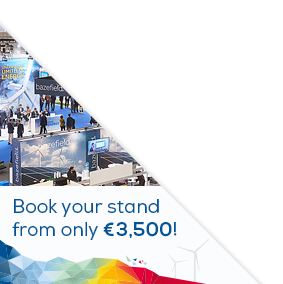Posters
Siblings:
ProceedingsProgrammeProceedingsSpeakersPostersContent PartnersElectrification StageMarkets TheatreR&I ActivitiesStudent DayProgramme Committee & abstracts reviewersPresenters dashboardCome meet the poster presenters to ask them questions and discuss their work
We would like to invite you to come and see the posters at our upcoming conference. The posters will showcase a diverse range of research topics and provide an opportunity for delegates to engage with the authors and learn more about their work. Whether you are a seasoned researcher or simply curious about the latest developments in your field, we believe that the posters will offer something of interest to everyone. So please, join us at the conference and take advantage of this opportunity to learn and engage with your peers in the academic community. We look forward to seeing you there!

PO089: North sea offshore DC grid: net benefit of high temperature superconductors
Maria O'Neill, Technology Analyst, SuperNode Ltd.
Abstract
A study conducted by SuperNode Ltd., The University of Strathclyde and the Offshore Renewable Energy Catapult (ORE-Catapult) outlines the system-wide cost benefit analysis (CBA) for a large North Sea offshore DC network enabling the UK to meet offshore wind generation targets of 2030 and 2050 (50GW and 80GW, respectively). The study was carried out by comparing two network designs based on conventional copper XLPE (Cross-linked Polyethylene) cables and HTS (High Temperature Superconductor) cables, to assess the potential benefits offered by HTS technology for offshore networks. The study spans 20 years from 2030 to 2050. The main costs include: * capital cost of the offshore grid * costs due to cable power losses (for XLPE cable) and cooling costs (for HTS cable) * loss of energy due to cable unavailability. The overall value of the offshore system includes the value to the citizen from grid connection of OWFs and the value gained from interconnection with neighbouring markets. Several other benefits arising from an HTS-led grid, such as reduced cable landfall impacts and reduced numbers of infrastructure projects overall leading to less expected delay and disruption, have been left unquantified. The cost benefits of XLPE and HTS cable schemes are compared with the following assumptions: * OWFs can be developed faster if suitable grid connections are available. HTS cables have larger capacity (up to 10GW) enabling more offshore connection capacity to be installed per project using HTS cables than an XLPE scheme (2GW). * The Offshore DC network prioritises connection of OWFs, and once sufficient grid connection capacity has been installed spare capacity of DC network (cables) can be used as interconnectors. * The value of offshore grid connection is related to the installed OWFs, while the value of interconnection is linked to the expected return on investment of existing interconnection projects.







